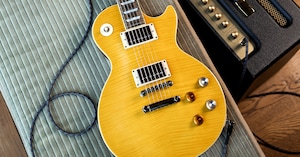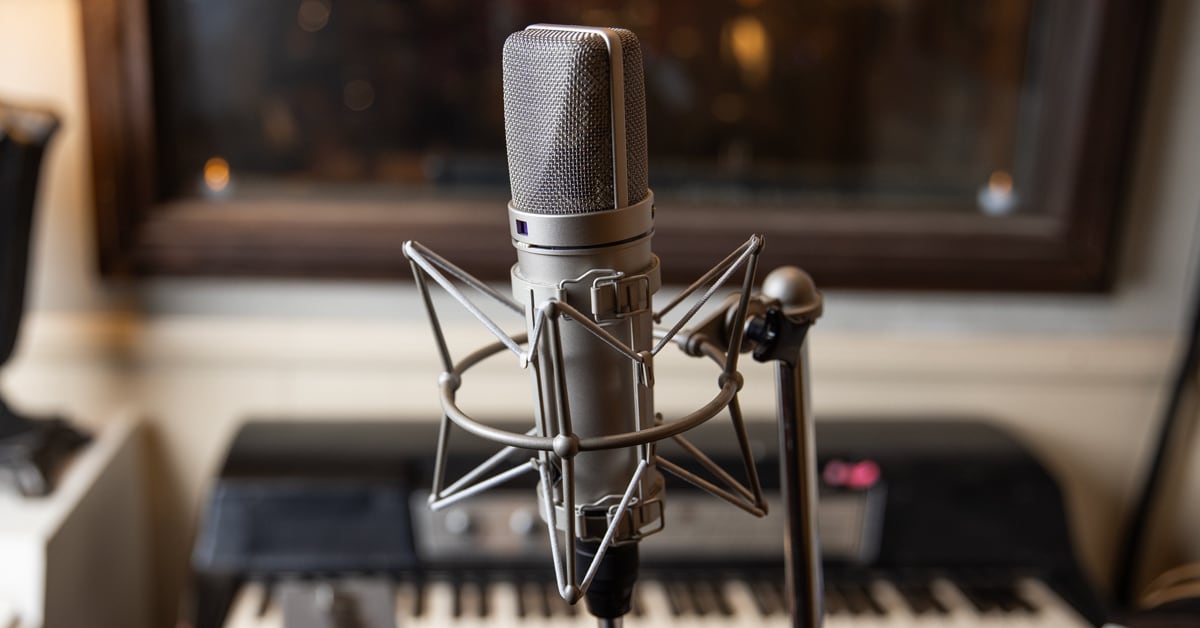While recording technology continues to evolve, and the digital revolution has democratized audio production in terms of widespread accessibility and convenience, there are still landmark pieces of tech that have yet to be surpassed. Early innovators—names like Bill Putnam, Rupert Neve and Georg Neumann—perpetually stand as the trailblazers of modern recording, whose designs and inventions are routinely used to capture multi-platinum hits to this day. One of those longstanding innovations is the Neumann U 67 tube condenser microphone.
Neumann microphones occupy a special place in audio history, with a transcendent legacy that includes defining the sound of recorded music for numerous generations. Despite the medium switching from analog tape to digital ones and zeroes, many of the tools used to capture magical performances—and those lightning-in-a-bottle moments—have stayed the same. That’s especially true of the famed Neumann U 67 tube condenser—a studio workhorse that, in no small way, has shaped the sound of music’s most prominent players from the 1960s and beyond.
The currently reissued Neumann U 67 is a faithful reproduction of the original design, standing as a testament to its innovative nature and stellar audio fidelity that engineers widely favor today. Part of a storied lineage, the U 67 succeeded the U 47 and primed the detonator for the explosive popularity of the U 87 that came several years after.
Now, we'll take a deep dive into the history and performance of the Neumann U 67 large-diaphragm tube condenser, to celebrate its indelible legacy and discover why it remains a “desert island” microphone for talented producers and engineers around the world.
Table of Contents
The History of the Neumann U 67 Tube Condenser Microphone
Famous Uses of the Neumann U 67
Constructing the Neumann U 67
Groundbreaking K 67 Capsule
EF86 Tube and BV12 Output Transformer
Sleek, Modern Enclosure
Applications for the Neumann U 67
Recording Vocals with the Neumann U 67
Recording Acoustic Instruments with the Neumann U 67
Recording Electric Guitar, Drums and More with the Neumann U 67
Comparing the U 67 to Neumann's Current Offerings
Neumann U 67 Tube Condenser Microphone Reissue
Neumann U 47 FET Collector's Edition Microphone
Neumann U 87 Ai FET Condenser Microphone
Neumann TLM 67 FET Condenser Microphone
Add the Neumann U 67 to Your Collection
The History of the Neumann U 67 Tube Condenser Microphone
Oft imitated but difficult to enhance, the air is rare where the Neumann U 67 lives. In 1958, as Georg Neumann GmbH learned of Telefunken’s plan to discontinue its VF14 tube—on which the flagship U 47 was based—the wheels were set in motion to develop a suitable successor to an already prized microphone. At the time, the U 47 was the first transducer Neumann created after the war, and it became an industry-standard vocal mic in the early ’50s. Losing its VF14 supply was a major blow to Neumann, though not an insurmountable obstacle. Born of necessity, the resulting U 67 tube condenser was simultaneously an immediate, game-changing success.
Dr. Gerhart Boré, the lead engineer at Neumann, was put in charge of designing what would become the first U 67. Proceeding with the knowledge that anything less than a coveted U 47 tube condenser would be a failure, Boré set out to produce an heir worthy of Neumann prestige.
Subsequently, the Neumann U 60 prototype debuted at the turn of the decade. Originally named after its birth year (1960), the U 60 first saw action in only a handful of leading studios for testing and evaluation. With approval from working studio engineers, the next major Neumann microphone was rebranded the U 67 for mainstream production, keeping in line with the 47’s nomenclature. Approximately 10,000 units were shipped between 1960 and 1971, marking the Neumann U 67 a tremendous success—it was the mic of the decade, used all over the place by countless top engineers and producers on innumerable everlasting hits.
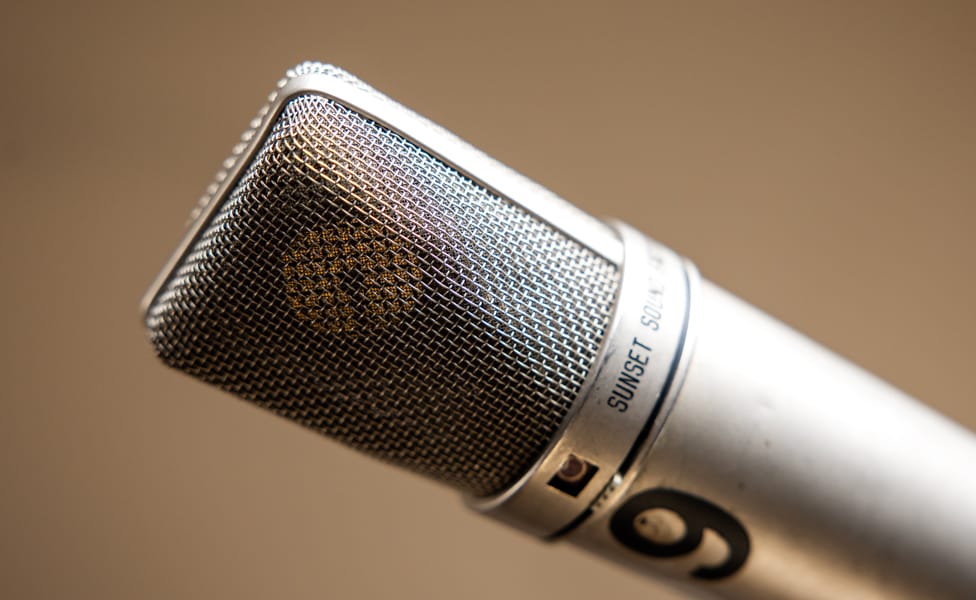
By the time Neumann developed the iconic U 87 FET condenser in 1967, utilizing the same capsule as its predecessor, the pervasiveness of the U 67 started to wane as the popularity of transistor-based microphones took hold. It ceased production altogether by 1971, but was continuously employed by top studios and those lucky enough to have secured one during its prime.
Eclipsed by the ubiquity of the U 87, the U 67 tube condenser’s discontinuation made it largely unobtainable for generations of up-and-coming engineers—until its reproduction in 2018. At over 60 years old, the U 67’s cutting-edge design has persisted with no modification, and today’s versions are exacting recreations of the originals.
Famous Uses of the Neumann U 67
Touted as the “sound of tomorrow,” the Neumann U 67 came at a pivotal moment in time, ready to capture one of the most prolific and revolutionary periods in music history. And that it did …
Vocals, acoustic guitar and piano are a trio of the Neumann U 67’s top uses, but it’s highly regarded as sounding great on just about anything. As a vocal microphone, famous examples listed on the U 67’s résumé include Paul McCartney on “Hey Jude” and Mick Jagger on “Sympathy for the Devil.” Throughout the ’60s and early ’70s, Jagger was infrequently seen recording with anything but a Neumann U 67. Simon & Garfunkel’s Live From New York City, 1967 was recorded with three of the tube condensers: two for vocals, and one for acoustic guitar. It was also famously used to record Deep Purple’s Ian Gillan on “Highway Star” from 1972’s Machine Head. Fast forward a couple decades, and producer Butch Vig would employ a Neumann U 67 on Kurt Cobain’s Nevermind vocals, recorded at Sound City in Los Angeles.
Jazz pianist Keith Jarrett’s The Köln Concert was captured using a pair of 67s, which is one of the best-selling jazz albums of all time and considered, by many, essential listening. Legendary engineer Glyn Johns—who’s worked with Led Zeppelin, The Who, The Rolling Stones, The Beatles, The Kinks, Bob Dylan and the Eagles, to name a few—favored a pair of 67s as unconventional overheads when developing his famous four-mic drum recording technique. He also used it on Jimmy Page’s acoustic guitar while recording Zeppelin’s self-titled debut.
Esteemed engineer and producer Al Schmitt, whose decades-spanning career rivals that of anyone, called the Neumann U 67 his favorite microphone in the world. He’s been quoted as saying “it works on everything,” and would use it to record vocals, acoustic guitar, drums, upright bass, strings, brass, woodwinds and more. He personally owned two of the U 67 reissues and two vintage models, and would routinely rely on any number of the 16 owned by Capitol Studios when working on projects. Known for his hands-off approach to post-EQ, Schmitt was a master of microphone selection and technique, letting the transducers “speak” for themselves, right at the source. The Neumann U 67 never failed to bring his vision life.
In contemporary rock years, engineer Vance Powell leaned on the iconic Neumann while recording Jack White’s first solo records, Blunderbuss and Lazaretto. On various tracks, the microphone would appear as a mono overhead and be used on electric bass, as well as being the go-to in front of White’s 1963 Fender® Vibroverb.
Constructing the Neumann U 67
The Neumann U 67 is often discussed in mythic language—seemingly an infinite source from which magical recordings spring. Of course, the 67’s widespread and long-lasting appeal didn’t just happen by accident—serious design savvy was at play. What, then, are the components of the Neumann U 67 that made it not only a special microphone for its time, but an enduring design that still holds up in the modern recording age?
Groundbreaking K 67 Capsule
A succinct answer would be the K 67 capsule, which is as significant a Neumann development as the mic itself. Differing from the original U 47’s dual PVC diaphragms mounted to a single backplate (the M7 capsule), the K 67 incorporated a split pair of backplates with Mylar membranes. It was much easier to independently tune and match two backplates than it was to tension-match dual diaphragms to a single backplate. The K 67 offered more consistent performance than the M7.
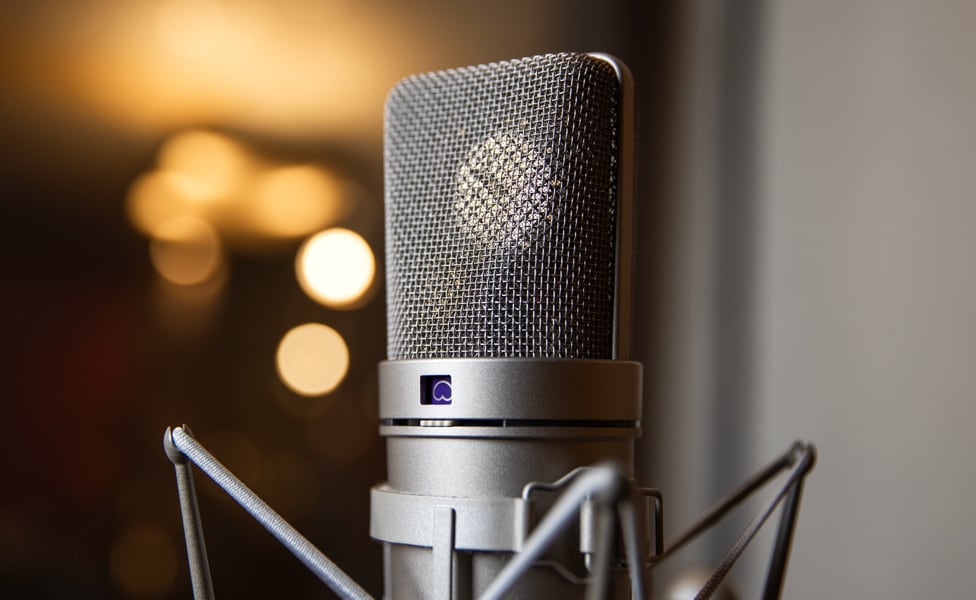
Overall, the K 67 was a simplified version of the M7 (and subsequent K 47) capsule that allowed for a more even response from its omnidirectional pickup pattern, while also introducing figure-8 as a viable third option on the U 67 microphone. The K 67 capsule, though not the first to include two backplates, is nothing shy of engineering genius, and it remains one of the most well-known and frequently imitated designs in condenser microphone history.
EF86 Tube and BV12 Output Transformer
Another key component of the Neumann U 67 is its EF86 pentode tube. These came to be in the late ’50s and were a readily available alternative to diminishing supplies of VF14s, coinciding with the U 67’s development. The EF86 was regarded for its low noise and desirable sonic characteristics, and was widely implemented in hi-fi and studio equipment throughout the ’60s.
Of additional significance is the U 67’s BV12 output transformer, which played a massive role in the frequency response of the microphone and the overall performance of its capsule. The innovative BV12 used a low-impedance tertiary winding that allowed Neumann to manipulate the sound of the U 67.
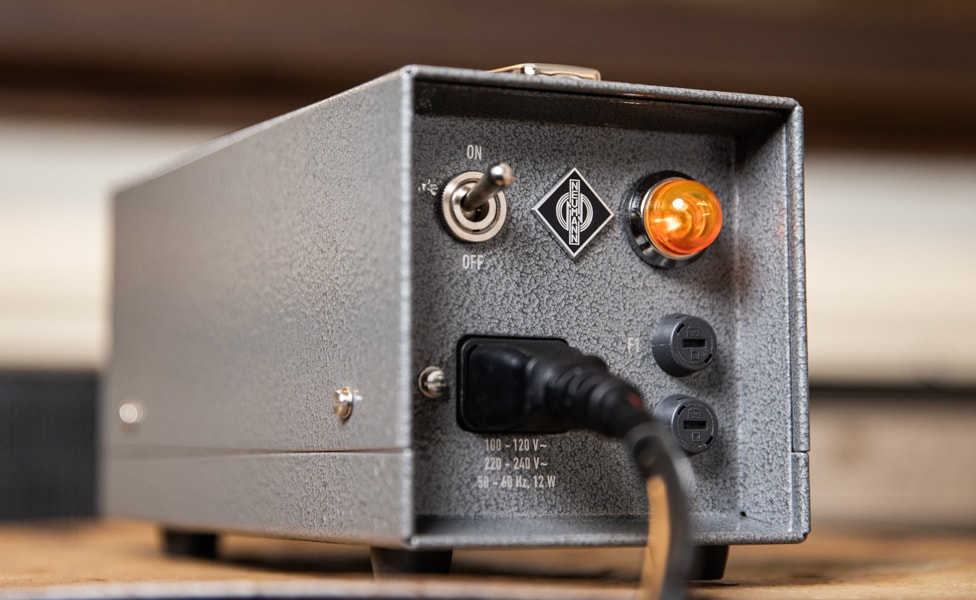
Sleek, Modern Enclosure
Externally, Neumann completely redesigned the U 67 to have a slimmer, tapered body compared to the U 47, thanks in part to the EF86’s smaller size, as well as new metal lathing technology. It also featured a squarer, tapered head grille, and the microphone could be opened without tools. Aesthetically, the U 67 is synonymous with Neumann today—the U 87 would go on to share the same housing, and both of these illustrious condensers are immediately recognizable by looks alone.
The 2018 (and beyond) reissue, as well as the limited-edition Greg Glaser Neumann U 67, share all the same components as the original. Neumann meticulously documented their process from the ’60s, and all modern equivalents use current productions of classic components to keep the U 67 in play for years to come.
Applications for the Neumann U 67
With a -10dB pad, three selectable pickup patterns (cardioid, omni and figure-8), an internal 40Hz high-pass filter and an additional switchable low-cut setting, the historic Neumann U 67 rightfully earns its designation as a “workhorse” large-diaphragm tube condenser.
It was one of the first microphones to consider emerging recording techniques—such as close miking—head on, which is directly reflected by its high-pass filtering intended to compensate for proximity effect. Pad engaged, the U 67 could also handle up to 124dB SPL without distortion, making it perfect for loud sources like electric guitar, drums, horns and full-band ambience.
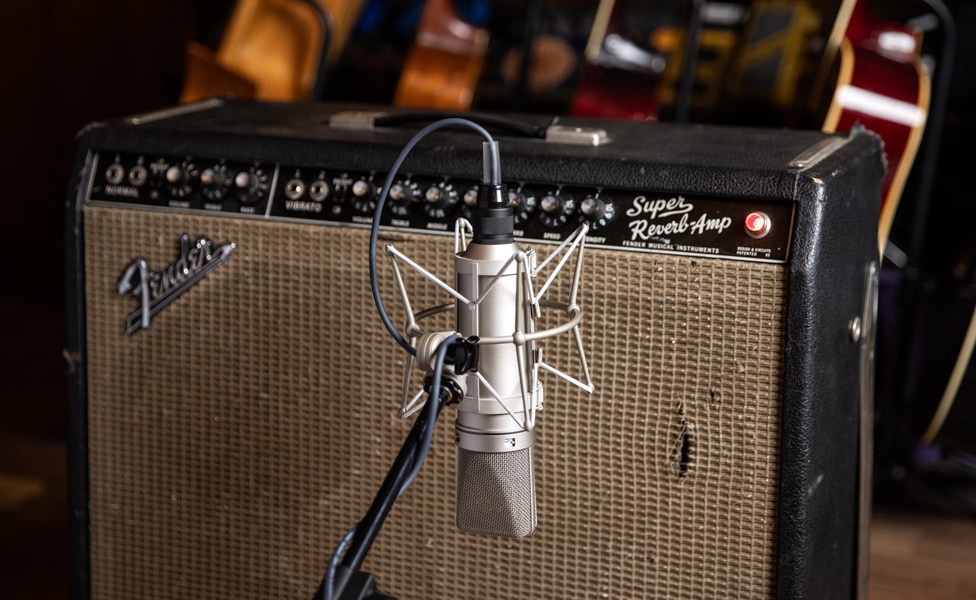
Sonically, the 67 can be described as having firm, punchy lows that don’t overwhelm or smear; the midrange has a three-dimensional quality that captures vocals and instruments with lifelike realness; and the high end is crisp, detailed and impossibly smooth. The U 67’s frequency response measures 40Hz–16kHz and is relatively linear across the spectrum. Plotted on a chart, it appears to be nothing extraordinary, but there are undeniably gorgeous inherent qualities that have made this such a special condenser microphone throughout the course of recorded music, from 1960 until now.
Despite competitors, even of the period, boasting subjectively better low-end response and further-reaching top end, absolutely nothing compares to the richness, mellowness, detailed midrange and, dare we say, “warmth” of the Neumann U 67 tube condenser.
Recording Vocals with the Neumann U 67
Because of how it reproduces high frequencies—particularly, its organic handling of sibilance—it’s no surprise the U 67 has been an in-demand vocal mic for decades, virtually removing the need for a de-esser. This is one of the most common and notable applications of a Neumann U 67. It reproduces vocal performances with remarkable intimacy, clarity and sweetness, not unlike being face to face with the singer themselves.

Both male and female vocals come to life through a U 67. Tube richness adds weight to any voice in the low mids, and you can reduce plosives at the source by switching on the 67’s high-pass filter. A subtle dip between 7kHz and 8kHz tames the most abrasive sibilance, while a mostly linear, gently rolling response between 1kHz and 4kHz hones in on key vocal frequencies and overtones, treating them with elegant precision.
Recording Acoustic Instruments
Acoustic guitar, piano and strings are other standout uses for the Neumann U 67, for many of the same reasons listed above. The slightly forward midrange helps so many instruments that live in this frequency area shine, with a fullness and richness that’s quintessentially Neumann. Moderately rolled-off highs also provide exceptional detail and airiness without harshness.
Have you ever wondered how numerous 1960s singer-songwriters got their sound? Often, it was a single U 67 placed about two feet away from the artist at roughly mouth height. The 67 has plenty of reach for the outer limits of close miking and can even grab the off-axis acoustic guitar in a natural-sounding way. Acoustic instruments, in particular, take on the three-dimensional sonic character the U 67 is known for.
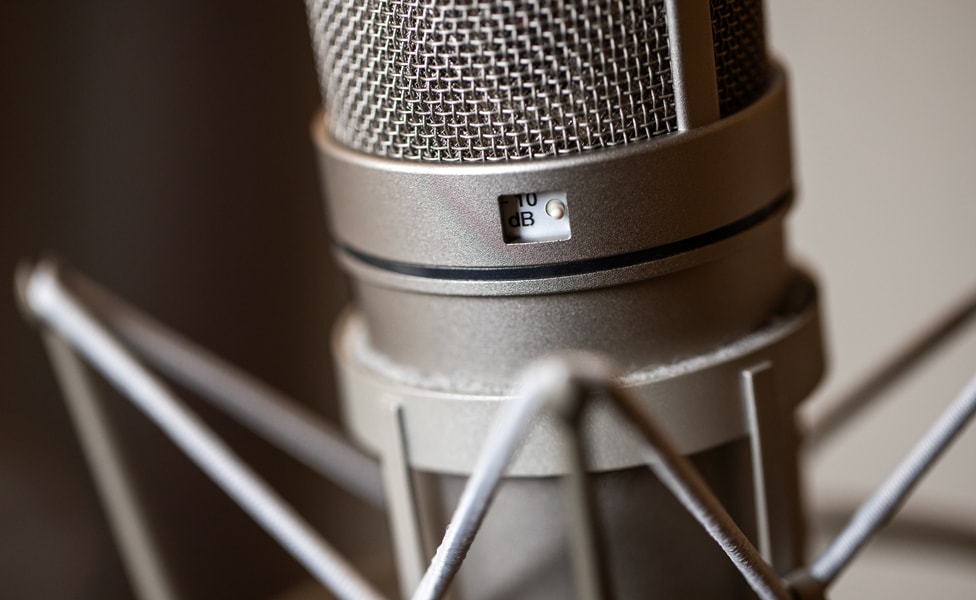
Recording Electric Guitar, Drums and More
124dB tolerance is substantial, even if it might seem like a low figure relative to contemporary condenser microphone offerings. Because of that, the Neumann U 67 cements its status as a tube workhorse and has been used to record loud sources from the beginning.
Electric guitar, drums and brass sound exceptional through a U 67. Close-miked speaker cabinets are immune to proximity effect, and the silkiness of the 67’s high-end response keeps guitars sounding smooth. For more unique coloration, turn off the -10dB pad and drive the U 67 into its own tube saturation if the tone ever needs a little more hair.
67s make excellent overhead and room mics, and help brass retain its punch while imparting a ribbon mic-like softness. And again, the Neumann U 67 can be wielded as a real tonal weapon by letting it overdrive up against louder instruments. There’s a usable range above the listed maximum sound-pressure level that generates pleasant second-order distortion, so the U 67 is ultimately as mean or as clean as the engineer wants it to be. Add it to the list of attributes that make the 67 an adaptable musical force in its own right.
It’s also worth noting that the sonic characteristics described here best represent the U 67’s cardioid pickup pattern, while both omnidirectional and figure-8 settings provide slightly different frequency responses. Using the omni pickup pattern brightens its sound overall, and figure-8 features an upper-mid presence boost that could serve as a cardioid alternative on close-miked sources. This also makes it an outstanding “side” mic in M/S stereo recording based on the articulate detail it reveals.
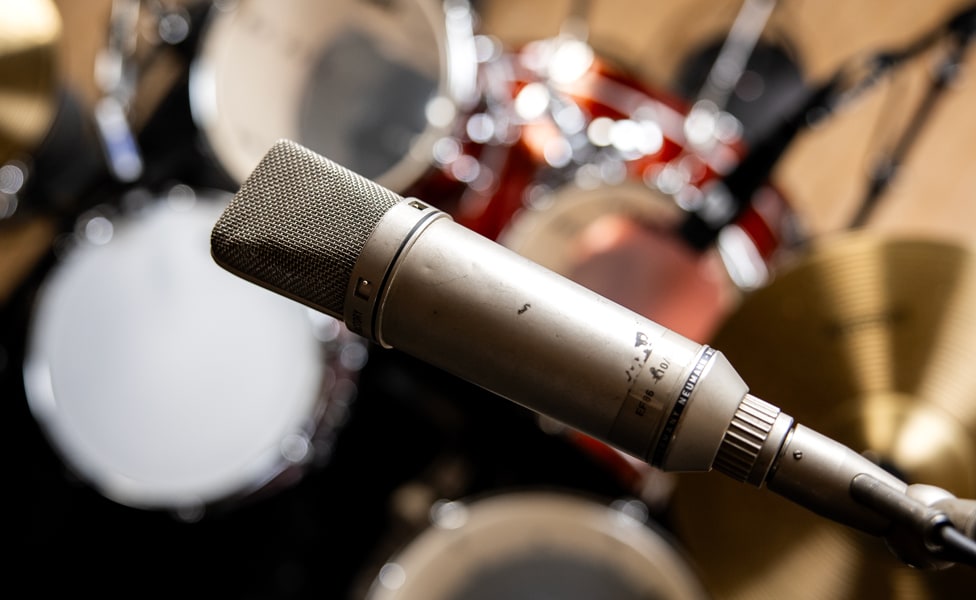
Comparing the U 67 to Neumann's Current Offerings
Each microphone in the Neumann collection has its own distinguishable voice—i.e., none are, or attempt to be, a replacement for the U 67, which continues to stand alone as one of the most innovative microphones ever made.
Neumann U 67 Tube Condenser Microphone Reissue
The Neumann U 67 is an undeniably masterful example of microphone technology and engineering, having been used on famous recordings from its inception in the ’60s all the way up until the present day. Though it disappeared from production for nearly 50 years, the pro audio community celebrated its 2018 reentry into the Neumann lineup, which currently includes other significant offerings, as well.
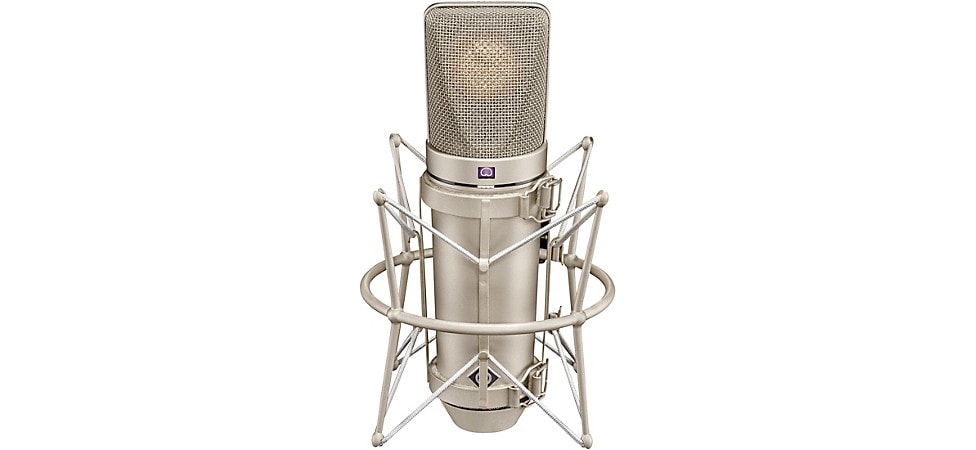
Pictured: Neumann U 67 Tube Condenser Microphone Reissue
Guitar Center is proud to celebrate Neumann's heritage alongside one of our own with the limited-edition Greg Glaser U 67 in a classy black finish. Contact Guitar Center Professional for more information.
Neumann U 47 FET Microphone
The U 47 FET was originally released in 1972 as a transistor version of the flagship, tube-driven U 47. Though it shares the same “vintage” frequency response as the 67 (40Hz–16kHz), the U 47 FET condenser treats those sounds differently, with a considerable presence boost between 3kHz and 4kHz.
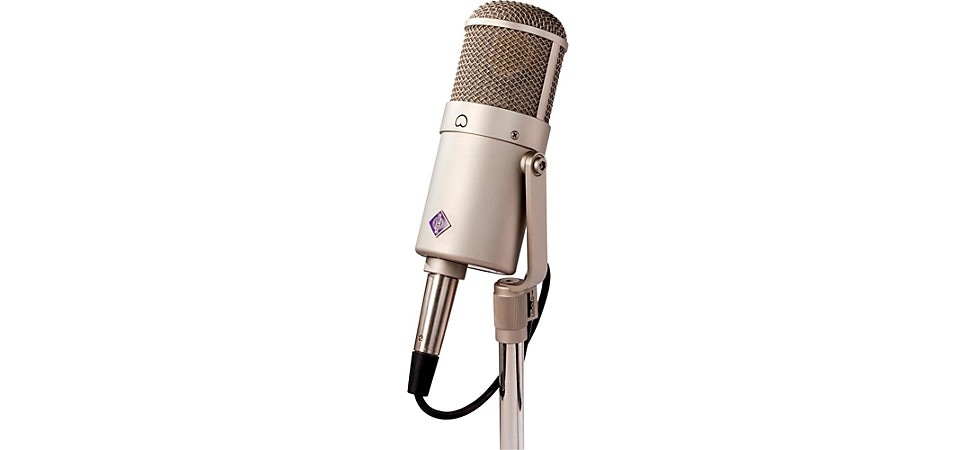
Pictured: Neumann U 47 FET Collector's-Edition Microphone
In the ’70s, the “new” U 47 FET was predominantly a vocal microphone, sharing a similarly smooth quality as the U 67, but with the added benefit of helping voices cut through with more presence. As styles and tastes began to change, some engineers shied away from using it on vocals by the 1980s, and began experimenting with it on electric guitar and kick drum, with proven success. Its FET construction offers incredible transient response, making it perfect for instruments like drums and percussion, as well as for picking up the nuance in dynamic guitar riffs and solos. Today, the Neumann U 47 FET condenser is perhaps best known as an upright and bass cabinet mic, boasting an uncluttered low end that translates with absolute precision
Neumann U 87 Ai FET Condenser Microphone
The Neumann U 87 Ai FET condenser is one of the most ubiquitous microphones in the world, designed as the transistor-based successor to the U 67 tube condenser. Introduced in 1967, the U 87 has recorded thousands of hit songs over the course of nearly 60 years and is the epitome of a modern large-diaphragm condenser.
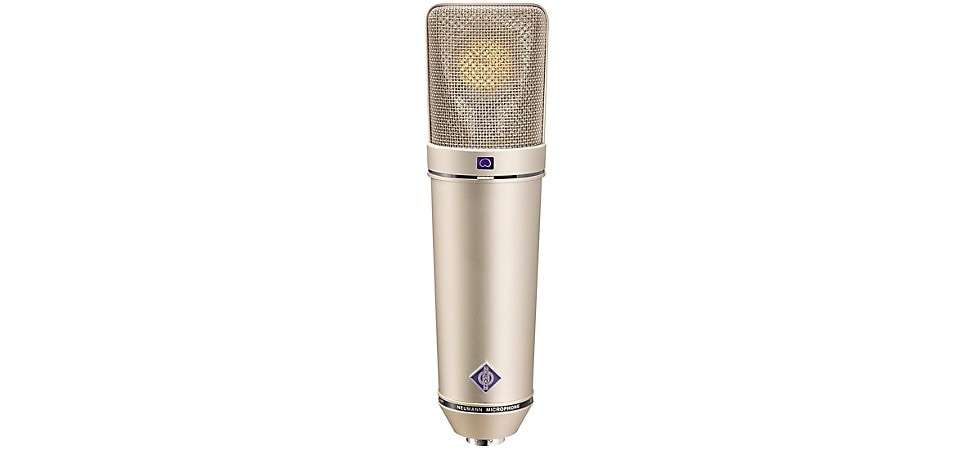
Pictured: Neumann U 87 Ai FET Condenser Microphone
Capitalizing on the design principles discovered during the 67’s development, the Neumann U 87 realizes its sonic charisma by means of solid-state technology. In terms of sound, the current U 87 Ai is surprisingly flat from 20Hz–20kHz, and yet it still, almost inexplicably, exudes color.
Where the U 87 Ai differs from the U 67 is in its treatment of highs, based on a reasonably steep presence lift from 7kHz–10kHz. With the U 67, you’re still going to get a smoother overall sound, with the additional benefit of tube heft and character.
Neumann TLM 67 FET Condenser Microphone
The Neumann TLM 67 recreates the vintage sound of tube U 67's using FET technology. Despite the U 87 being the immediate successor to the U 67, the contemporary U 87 Ai has a sound all its own, while the TLM 67 has more of a throwback vibe.
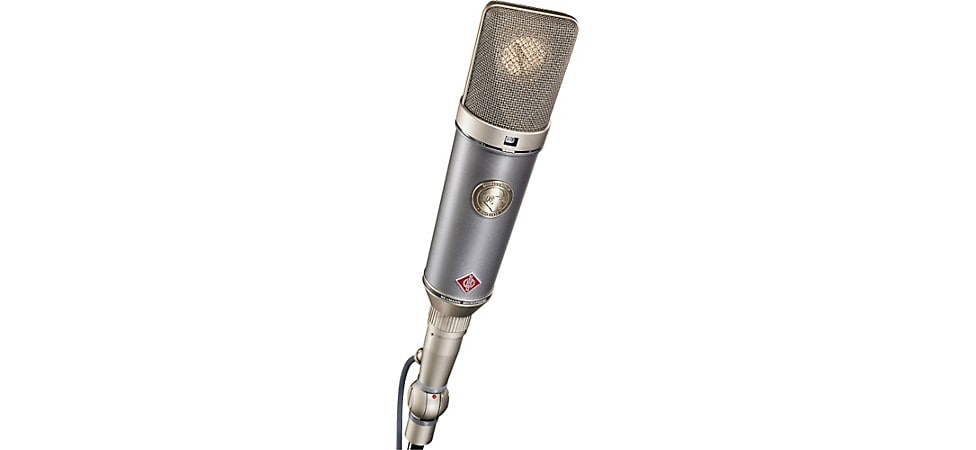
Pictured: Neumann TLM 67 FET Condenser Microphone
To accomplish the retro dynamic behavior of the U 67 with 21st-century, solid-state tech, the TLM comes with a considerably low SPL tolerance of 105dB yielding 0.5% Total Harmonic Distortion (THD). It’s possible to push it much harder, in which it achieves 125dB SPL at 5% THD—all to capture the tube behavior of the original and reissued U 67.
The Neumann TLM 67 might be classified as a “FET emulation” of the innovative tube icon, and it’s a significantly more budget-friendly option as a result. Still, it does a good job of capturing the essence, and is a fine large-diaphragm condenser with its own voice. We also offer the Neumann TLM 67 as a complete set, including a windscreen, shockmount and XLR cable.
Add the Neuman U 67 to Your Collection
Neumann rocked the recording world with the U 67 tube condenser in 1960. Already an established and respected brand, they bested themselves with a microphone that would go on to capture some of the finest performances in recorded music. A who’s-who of artists, engineers and producers have called upon the renowned U 67 to convey authentic creative expression in a natural, meaningful way that would resonate with listeners. Venerated on vocals, pristine on piano, golden on guitar and illustrious on every instrument, the Neumann U 67 simply is what it is—one of the greatest of all time.
Ready to take your recordings to the next level with vintage sound that’s as fresh as ever? Guitar Center offers the Neumann U 67 standard reissue, in addition to the limited-edition Greg Glaser model in a striking black enclosure.
Use our handy Store Locator to find a Guitar Center near you, or ring up one of our expert Gear Advisers at 855-770-3373.
